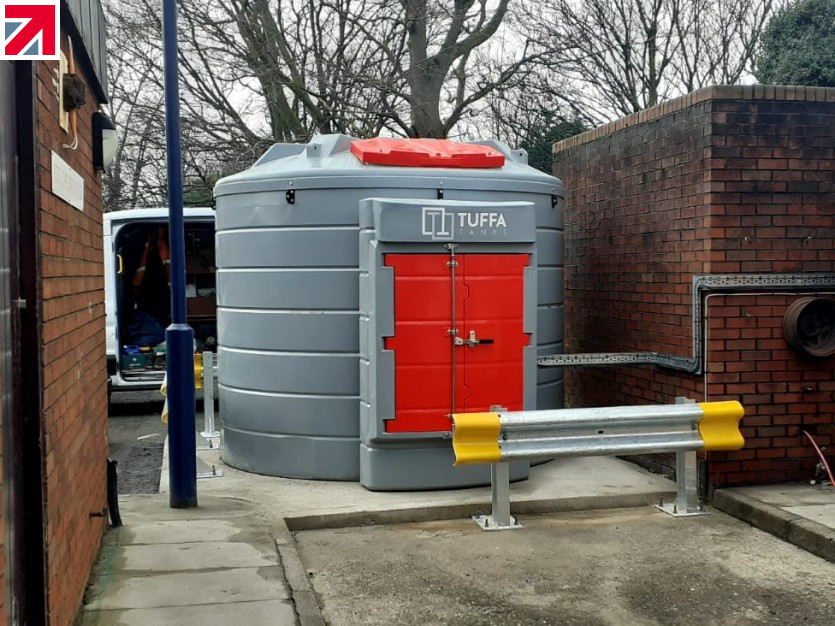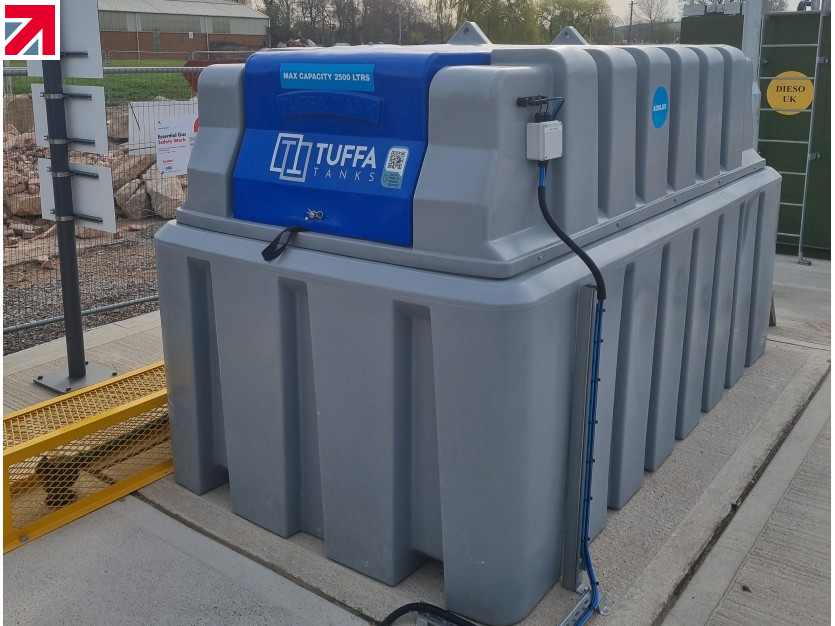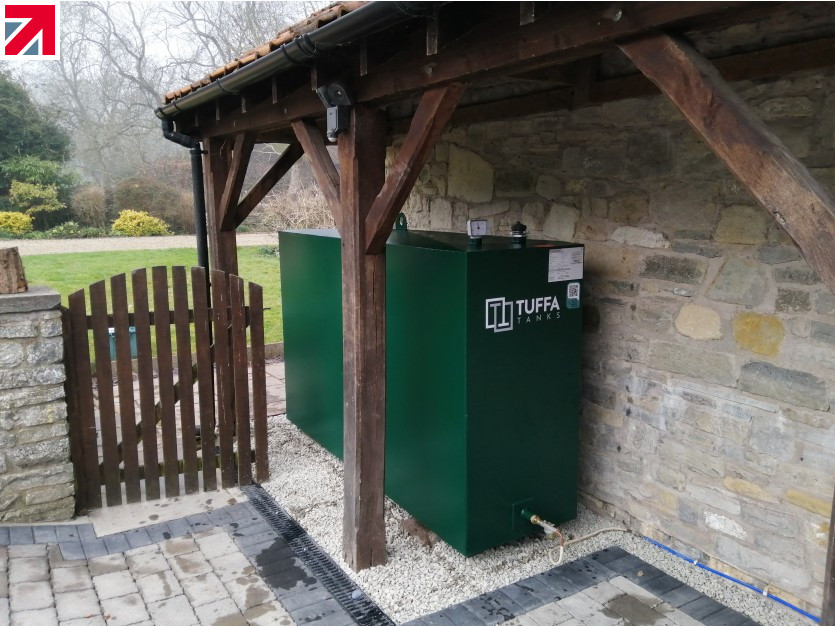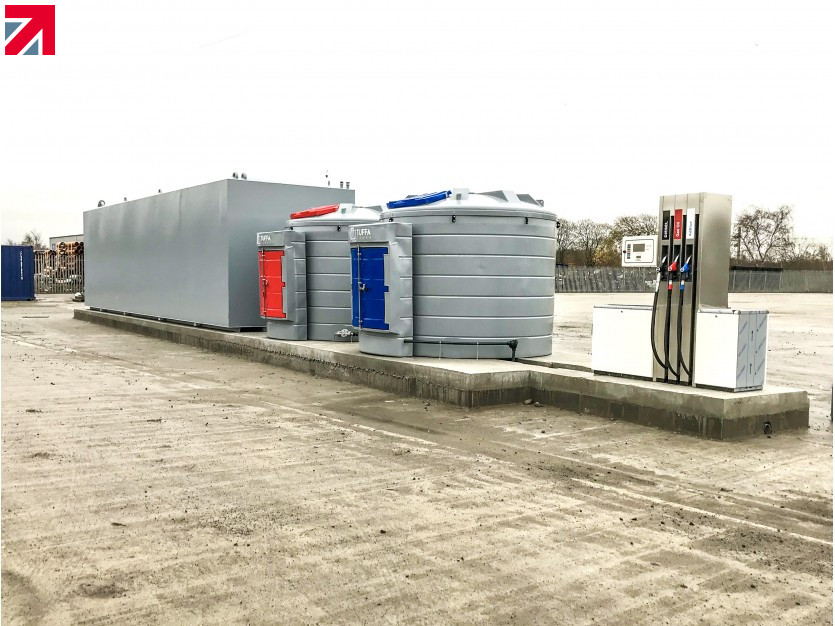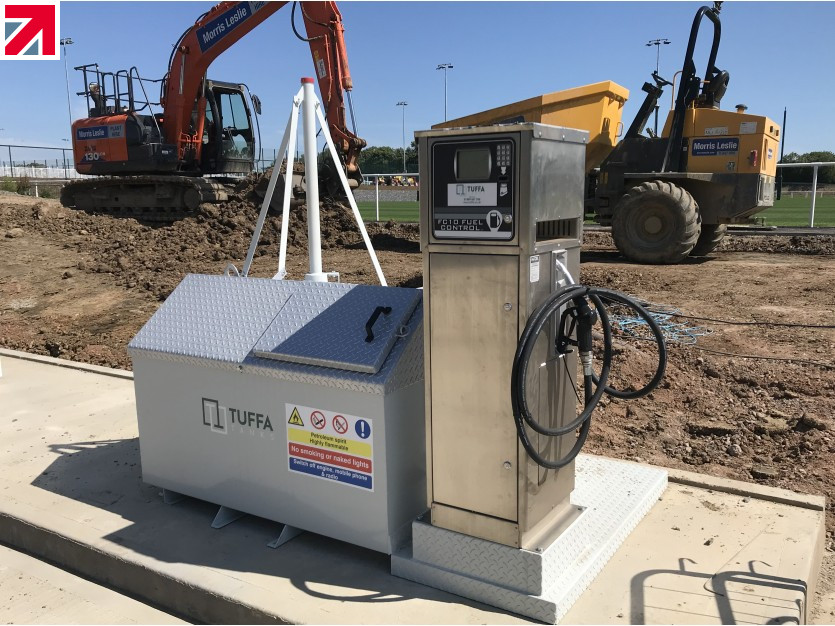Bulk liquid storage tanks are available in steel or plastic, Tuffa Tanks manufacture tanks in both materials and we recognise that both have their own unique benefits. When faced with the question ‘steel vs plastic tanks, which one is better?’ it’s well worth discovering the virtues and pitfalls of both options as storage tanks are a considerable financial investment.
ADVANTAGES OF STEEL TANKS
CAPACITY
Our steel tanks are manufactured in capacities from 900 to 86,000 litres as standard. This means that steel tanks are often the best option for sites requiring high capacity storage (anything above 15,000 litres).
STRENGTH AND LONGEVITY
Our steel diesel tanks and steel oil tanks are hand-fabricated in our workshop using a thick 3mm mild steel (up to a 10,000 litre capacity) and 6mm thick steel (over 10,000 litre capacity). Our bunded tanks are also ‘fully bunded’ with an independent primary tank and bund – whereas some tanks on the market have a single base plate on the bottom of the tank, an area particularly susceptible to rust. This makes steel tanks (particularly our fully bunded tanks) exceptionally strong, hard-wearing, weather-resistant and safe. Tuffa’s bunded steel tanks come with a 10 year guarantee and a design life expectancy of at least 30 years.
PROTECTION
Steel tanks also offer greater protection from outside forces such as impact damage or fuel theft. Penetrating steel is more difficult, noisy and time-consuming than plastic tanks which itself is often enough to make fuel thieves choose easier targets.
DESIGN VERSATILITY
All of our steel tanks are hand fabricated and are usually made to order. This gives our customer’s greater design versatility with a wide variety of optional extras, dispensing equipment and even safety features such as gantry, steps and handrails. Where custom dimensions are an absolute necessity there is also the option of bespoke dimensions. Plastic tanks are usually made using a mould which gives you some adaptability with ancillary equipment but very little with regards to shape or dimensions.
DISADVANTAGES OF STEEL TANKS
EXPENSE
Steel tanks have a much more labour-intensive manufacturing process and are a more expensive material. As a rough rule of thumb, a steel tank from a reputable manufacturer will be about double the cost of a plastic tank in the same capacity.
WEIGHT
Steel weighs considerably more than plastic which can make manoeuvring and installing the tank more difficult and if specialist machinery is required then more expensive.
LEAD TIMES
While we keep stock of some of our small steel tanks, generally they are made to order. This means that lead times tend to be longer than plastic tanks, with small tanks (up to 2300 litres) typically taking around 4-6 weeks and large tanks (over 2300 litres) taking around 8-10 weeks.
MAINTENANCE
While more of a consideration than ‘disadvantage’, steel tanks are a big investment and greater consideration should be taken to maintaining the tank, checking for rust and touching up paintwork to ensure the continued integrity of the tank.
ADVANTAGES OF PLASTIC TANKS
VALUE
It’s important to note that plastic tanks are not only cheaper than steel tanks, but, they also offer great overall value. As highlighted below, these are still very hard-wearing tanks with the same basic functionality as their steel counterparts.
DURABILITY
While not as robust as steel, plastic tanks are still very durable. We manufacture plastic tanks for diesel, heating oil, AdBlue, water and more. These are constructed with polyethylene a recyclable material that is hard-wearing, UV stabilised and corrosion-resistant. The rotomoulding process makes a strong single unit and our higher than average polymer shot weight gives an extra thick and stable tank wall. This gives our bunded plastic tanks a design life expectancy of at least 20 years and a 10 year guarantee.
SITE & USAGE FLEXIBILITY
Some liquids simply aren’t compatible with mild steel and can corrode the metal leading to contamination of the liquid being stored and affecting the integrity of the tank. For this reason, we only manufacture polyethylene tanks for chemicals such as AdBlue, De Icer & Sodium Hydroxide. Being relatively light, plastic tanks can often be manoeuvred around a site by ordinary company-owned vehicles whereas steel tanks usually require specialist equipment.
DISADVANTAGES OF PLASTIC TANKS
CAPACITY
Most manufacturers produced plasic tanks up to 10,000 litres when bunded or 15,000 for single skin, although we manufacture plastic bunded tanks up to 15,000 litres and 20,000 litres for single skin. However, while steel tanks have a much bigger capacity per unit, plastic tanks can often be interlinked significantly increasing their working capacity. The example below is five 15,000 litre water tanks with an effective capacity of 75,000 litres. These tanks are being used as emergency fire fighting water tanks during highway construction on the continent. The greater manoeuvrability of the plastic tanks enables them to be moved to follow the construction work.
WEATHER EXPOSURE
The polyethylene material used in the manufacture of plastic tanks are hard wearing, corrosion resistant and UV stabilised. However, it’s still plastic and prolonged exposure to heat or cold can cause it to crack and warp. For this reason, we would always recommend purchasing a bunded tank as the primary tank (which holds the liquid) should be relatively unaffected.
PROTECTION
While still a strong material, plastic is much softer than steel and provides less protection from impact damage. One option is to surround the installation in Armco barriers. Perhaps the bigger flaw is the relative ease in which fuel thieves can penetrate plastic tanks and siphon fuel. However, preventative methods can be used as shown in our Expert Guide to Heating Oil Tanks and Expert Guide to Diesel Storage Tanks.
STEEL VS PLASTIC FUEL TANKS
The above evaluation of steel and plastic tanks is true of all the tanks we manufacture, but there are several considerations specific to our fuel tanks that warrants a steel vs plastic fuel tanks section. When siting a diesel dispensing tank on a site without mains electricity then a 12/24V dispersion option powered by a vehicle can be used, however, these are exclusive to our plastic diesel tanks in capacities from 1,350 to 10,000 litres. Additionally, we manufacture a 15,000 litre diesel dispensing tank interlinked with a 15,000 litre holding tank giving you an effective capacity rivalling most steel tanks (30,000 litres) but with a lower price tag.
Alternatively, steel diesel tanks are generally a higher specification as standard (although both plastic and steel have a variety of optional extras) with features such as a C2020 contents gauge and bund alarm or high-security cabinets (walk-in for larger sizes) with roller-shutter doors.
STEEL VS PLASTIC OIL TANKS
Lastly, one more consideration particular to steel and plastic oil tanks should be observed: fire protection. Fortunately, we are the only tank manufacturer with the patent, Local Authority Building Control (LABC) Approval and capacity to manufacture fire rated oil tanks in plastic and steel. This allows you to install oil tanks adjacent to or even within buildings and boundaries where they can be safely ‘hidden’ away.
STEEL VS PLASTIC OIL TANKS
Ultimately, the choice between steel and plastic tanks comes down to budget, site requirements including the storage capacity needed, the properties of the chemical being stored, and whether it’s a short or long-term investment. If you would like advice on the best tank for your requirements or need a quote on steel or plastic tanks, please contact our Sales team by calling 01889 567700, emailing sales@tuffa.co.uk or use the enquiry form on our website.
Find out more about Tuffa Tanks on their member profile page here
Member-created content 4 years ago | From members
